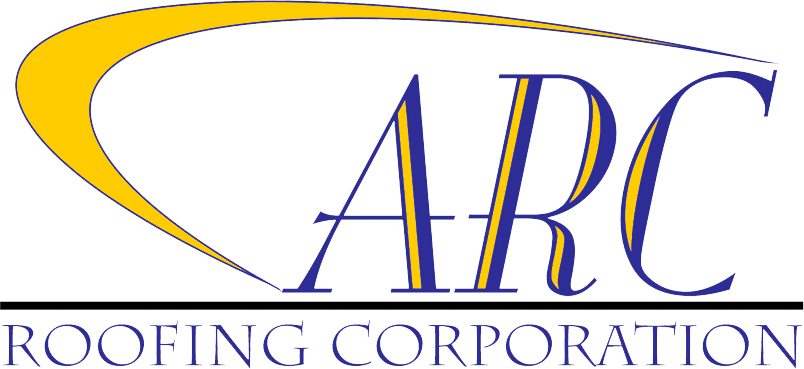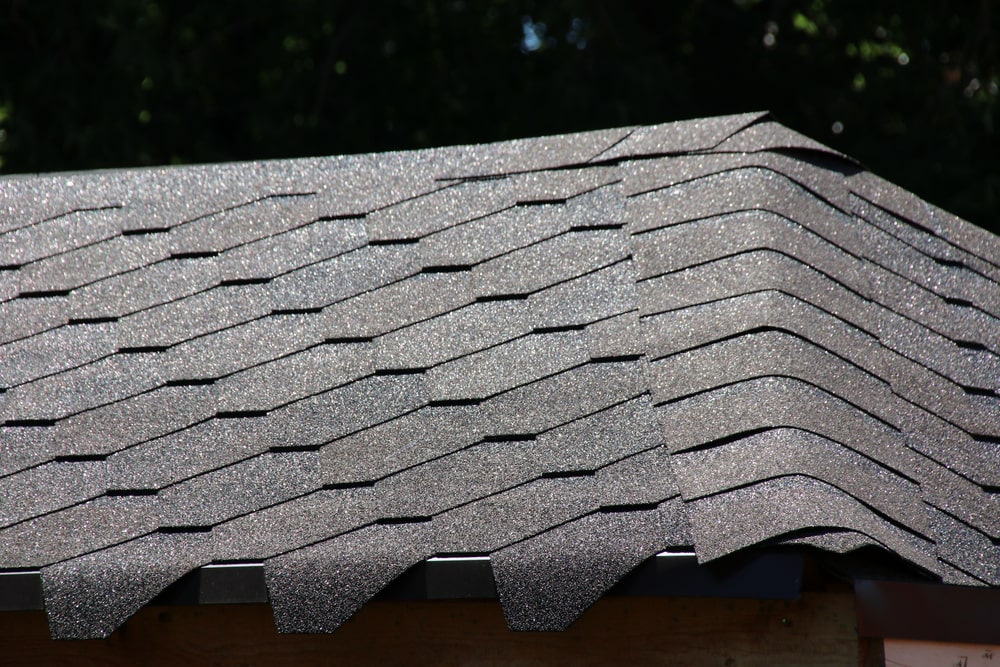Asphalt and fiberglass shingles are among the most popular roofing materials.
People love them because they are durable, affordable, and easy to install. However, there are some key differences between fiberglass vs. asphalt shingles that impact factors like longevity, climate suitability, fire resistance, environmental friendliness, and cost.
The Base Layer Sets Fiberglass and Asphalt Shingles Apart
The main difference between fiberglass and asphalt shingles lies in their base layer. Asphalt shingles utilize an organic mat base whereas fiberglass shingles use, unsurprisingly, a fiberglass mat.
Asphalt shingles typically use a base mat made from organic paper-like materials such as wood fibers or cellulose. This mat is then saturated with asphalt and topped with colored granules for UV protection and aesthetics.
The asphalt content helps make the shingles pliable so they can be installed on roofs with more complex architecture.
In contrast, fiberglass asphalt shingles swap out the paper base for one made from fiberglass mesh. They contain 20-30% less asphalt than organic asphalt shingles since the fiberglass mat provides reinforcement on its own. The fiberglass base also lends the shingles increased dimensional stability and fire resistance.
Video: Let’s Talk Fiberglass Roof Shingles
Durability Differences Depend on Climate
When evaluating fiberglass vs. asphalt shingles, durability is one of the most important considerations. And the climate you live in determines which option offers greater longevity.
Asphalt shingles tend to hold up better than fiberglass in colder northern regions that experience freeze-thaw cycles, snow, and ice. The higher asphalt content helps prevent cracking while the reinforced paper mat resists degradation.
As such, asphalt shingles often come with longer warranties — up to 50 years — when installed in suitable climates.
In hotter southern regions without harsh winters, fiberglass shingles prove more durable and can still come with 20-30 year warranties. Their dimensional stability ensures the shingles lie flat on the roof rather than succumbing to warping or deformities that can occur with asphalt shingles installed in hot climates.
Fiberglass resists degradation from heat and sunlight better over time as well.
Fire Safety Favors Fiberglass
Another area where fiberglass shingles outperform their asphalt counterparts is fire safety.
Treated with flame retardant chemicals and benefiting from a non-combustible fiberglass mat, fiberglass asphalt shingles achieve Class A fire safety ratings. This highest rating indicates the material can withstand significant heat and flaming embers without catching fire.
While building codes require at least Class C fire ratings, Class A fire-rated shingles provide homeowners with extra peace of mind. This added protection can also earn homeowners insurance discounts in some cases.
For homes in wildfire-prone regions, fiberglass shingles’ fire resistance offers critical protection.
On the other hand, organic asphalt shingles carry greater fire risks due to their wood-based mat and higher asphalt content. Most achieve only Class C fire safety ratings.
Upgrading to specialty fire-resistant asphalt shingles can provide better fire protection than standard asphalt shingles but likely not to the level of fiberglass shingles.
Environmental Impact
Eco-conscious homeowners may also prefer fiberglass over asphalt shingles due to their reduced environmental impact. Since they contain at least 20% less asphalt, a non-renewable resource, fiberglass shingles have a smaller carbon footprint.
Fiberglass shingles also weigh around 50-100 lbs less per square (100 sq ft) than asphalt. This lighter weight makes them less energy-intensive to transport. And fiberglass itself contains high levels of recycled glass content, giving it green credentials.
While manufacturers have made some progress in recycling asphalt shingles, most still end up in landfills at the end of their lifecycle.
On the other hand, fiberglass shingles’ base glass fibers and minerals can be recycled back into new shingle production or other building products like insulation.
Asphalt Shingles Have the Edge on Cost
Despite their downsides for some climates, asphalt shingles maintain an edge over fiberglass when it comes to affordability.
Material and installation costs for asphalt shingles tend to cost $100 or more less per square than comparable fiberglass shingles. This can translate into thousands of dollars in savings for the average home.
Labor costs for installing fiberglass vs. asphalt shingles don’t differ significantly since the methods are similar. However, fiberglass does have a steeper learning curve for proper installation to avoid cracks and breaks in the more rigid shingles. Improper installation can void warranties.
Appearance and Installation Methods Align
While the base materials differ between asphalt and fiberglass shingles, their top layers align closely when it comes to appearance.
Both types come in a wide range of architectural styles and colors to match home design aesthetics. You’ll find comparable warrantied lifespans between 30-50 years as well.
The installation process doesn’t differ significantly either for these two common shingle types. Both use overlapping rows of shingles nailed to the roof deck to provide durable and weathertight protection for homes.
The training needed to properly install asphalt or fiberglass shingles also aligns closely.
However, differences in material flexibility, pliability, and fragility do require subtle installation differences. Fiberglass shingles prove more brittle and rigid than soft asphalt shingles.
Special care must be taken when lifting, carrying, and nailing fiberglass shingles to avoid unintended breakage that can undermine functionality or longevity.
If you’re still unsure whether fiberglass or asphalt shingles make sense for your roofing project, consult a professional roofing contractor. They can assess your home, climate, and priority needs and make a shingle recommendation that checks all the right boxes for performance, protection, and cost. With an optimal shingle choice, you’ll enjoy lasting returns from an attractively restored roof installation.






